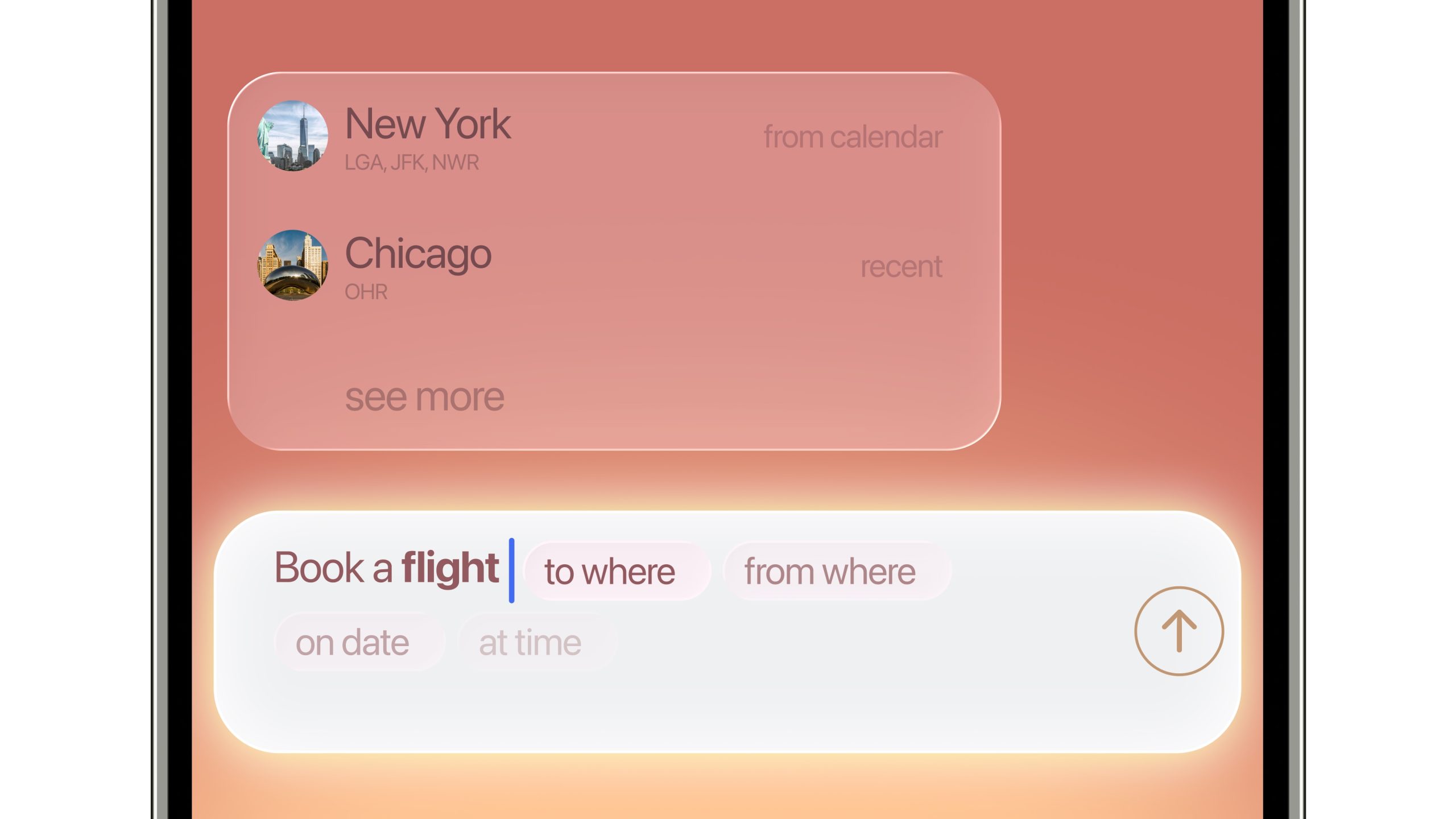
A significant hurdle in the widespread adoption and efficient utilization of artificial intelligence lies in the precision of user input. This challenge, often termed "prompt engineering," can transform a seamless AI interaction into a frustrating, iterative process. Addressing this core issue, Hero, a productivity startup founded by former Meta employees, recently unveiled an innovative autocompletion Software Development Kit (SDK) designed to intuitively fill in AI prompts based on contextual understanding. This invite-only SDK represents a strategic move to empower developers, enabling them to integrate sophisticated, context-aware prompt generation directly into their applications, thereby streamlining how users engage with AI models.
The Evolving Landscape of Human-AI Communication
The burgeoning field of artificial intelligence, particularly with the advent of large language models (LLMs) and generative AI, has ushered in an era of unprecedented computational power and creative capability. However, unlocking this potential often requires a specific skill: the ability to craft clear, comprehensive, and effective prompts. A well-constructed prompt acts as the steering wheel for an AI, guiding it to produce the desired output, whether it’s generating text, images, code, or data analysis.
Historically, human-computer interaction has steadily evolved from command-line interfaces to graphical user interfaces (GUIs), aiming to make technology more accessible. The current wave of AI tools, while powerful, often reverts to a text-based input paradigm, demanding a new kind of literacy. Users frequently struggle with the ambiguity of natural language when translated into AI instructions, leading to vague outputs or the necessity for extensive back-and-forth refinement. This iterative dialogue consumes valuable time and cognitive effort, hindering productivity and user satisfaction. The complexity has even birthed a nascent profession: the prompt engineer, individuals specializing in optimizing queries for AI systems. This new role underscores the inherent difficulty many users face in communicating effectively with AI, highlighting a clear demand for more intuitive interaction methods.
Consumer-facing AI applications have already begun to recognize this bottleneck. Many now incorporate features like suggestion buttons, predefined templates, or autogenerated recommendations. These additions aim to gently guide users, showcasing the application’s capabilities and encouraging more frequent, successful engagement. Hero’s new SDK takes this concept a significant step further, moving beyond mere suggestions to offer proactive, contextual autocompletion that anticipates user needs.
Hero’s Context-Aware Autocompletion Solution
Hero’s innovative SDK functions by dynamically populating fields within a prompt based on the user’s initial input and the application’s context. Imagine, for instance, a user intending to book travel. They might simply type "Book a flight" into an AI-powered travel assistant. Rather than requiring the user to manually input every subsequent detail, Hero’s autocomplete SDK springs into action, intelligently presenting fields such as "to," "from," "on date," "at time," "airline," and "returning on." The user retains full control, able to fill in the necessary information, modify suggestions, or send the partially completed query to the chatbot at any point. This intelligent pre-filling significantly reduces the mental load and the number of steps required to achieve a desired outcome.
The utility of this technology extends far beyond simple transactional tasks. Consider the burgeoning field of generative media, encompassing AI-powered image, video, or even music generators. Crafting a prompt for these tools can be particularly intricate, often requiring specific parameters to achieve a precise aesthetic or outcome. Hero’s autocomplete can assist here by suggesting variables like "object," "style," "location," "landscape," and "camera angle" for visual generators, or "mood," "genre," and "instrumentation" for audio creation. This capability echoes efforts seen elsewhere in the industry, such as Adobe’s Firefly application, which offers users distinct input sections for keywords to refine soundtrack generation, breaking down complex prompts into manageable components. Hero’s approach, however, aims for a more fluid, integrated autocompletion experience directly within the input field itself.
Saharsh Vedi, an engineer at Hero who contributed to this feature’s development, highlighted the common issue of needing extensive "back-and-forth" with AI applications to achieve desired results. He posits that with this advanced autocomplete functionality, users can often reach their objective with substantially fewer prompts, potentially even a single, highly refined query. This reduction in conversational turns represents a significant leap in efficiency.
Technological Foundations and Efficiency Gains
The predictive power behind Hero’s SDK stems from a sophisticated "series of models," as revealed by co-founder Brad Kowalk. These models are designed to anticipate user intent and subsequent input with remarkable accuracy, drawing from vast datasets and contextual cues within the application. This multi-model approach allows for a nuanced understanding of user needs, enabling the SDK to generate highly relevant and actionable suggestions.
Kowalk emphasized the tangible benefits of this technology, stating, "With AI autocomplete, we pull forward all the inputs needed to complete an action, finishing it 10 times faster as there are fewer back-and-forths involved. This unlocks a whole new set of use cases ranging from travel to commerce, and ads to customer support." This acceleration not only enhances user experience but also translates into significant operational savings for companies operating at scale. Fewer messages exchanged with an AI model mean reduced computational load and, consequently, lower server costs – a critical consideration as AI adoption continues to skyrocket.
The genesis of this technology is rooted in the founders’ prior experience at Meta, particularly their work on augmented reality (AR) features. In AR environments, constraints on screen size and input methods necessitate extremely simplified and efficient interfaces. The challenge of adding parameters to queries within such a confined digital space directly informed the development of Hero’s autocomplete, which aims to provide rich functionality through minimal user effort. This historical context highlights a design philosophy centered on intuitive, streamlined interaction, a principle now being applied to the broader AI landscape.
Market Impact and Future Trajectories
Hero’s autocompletion SDK stands poised to profoundly impact several facets of the AI ecosystem. From a user perspective, it democratizes access to sophisticated AI tools by lowering the barrier to entry. No longer will users need to master the intricacies of prompt engineering to extract value from AI. This enhanced accessibility could accelerate the mainstream adoption of AI applications across various demographics, making powerful tools available to a wider audience.
For developers, the invite-only SDK fosters innovation by providing a ready-made solution for a common pain point. Integrating Hero’s technology could enable smaller teams to offer highly sophisticated AI interaction features without having to develop complex predictive models from scratch. This could lead to a proliferation of more user-friendly AI applications, differentiating products in an increasingly crowded market.
The applications highlighted by Kowalk – travel, commerce, advertising, and customer support – represent just the tip of the iceberg. In travel, it could personalize itinerary planning; in commerce, it could streamline product searches and recommendations; in customer support, it could expedite issue resolution by helping users formulate precise queries. The integration into advertising, exemplified by Hero’s discussions with ad tech startup Koah Labs, is particularly intriguing. Imagine AI-powered ads that appear as contextually relevant autocomplete suggestions, offering a highly personalized and less intrusive form of advertising based on anticipated user needs. This could redefine how brands engage with consumers in digital spaces.
The broader market impact could see Hero’s innovation setting a new standard for AI interaction. As users become accustomed to seamless, predictive prompting, other AI platforms and developers may be compelled to integrate similar functionalities to remain competitive, ultimately pushing the entire industry towards more intuitive and efficient human-AI collaboration.
Funding and Strategic Growth
Hero’s journey has been marked by steady financial backing, underscoring investor confidence in its vision. The startup previously secured $4 million in seed funding and has recently augmented this with an additional $3 million in funding, led by Forerunner Ventures. This capital infusion is crucial for further research and development, scaling operations, and expanding market reach. Kowalk indicated that the company anticipates pursuing a larger funding round in the coming months, contingent on the growth trajectory of its core app and the broader adoption of the SDK.
Beyond external partnerships, Hero is actively integrating and refining this autocompletion technology within its own productivity application. The company is currently testing a version of the feature that assists users in scheduling meetings or coordinating catch-ups with friends through intelligently autocompleted prompts. This internal deployment serves as a real-world proving ground, allowing Hero to gather valuable user feedback and iterate on the technology before its broader release to users in the near future.
The strategic discussions with Koah Labs regarding AI-powered ads further illustrate Hero’s ambitious plans. By embedding contextual autocomplete suggestions directly into advertising mechanisms, Hero aims to create a new paradigm for brand engagement that is less disruptive and more relevant to the user’s immediate intent. This move could unlock significant revenue streams and demonstrate the versatility of their core technology beyond pure productivity applications.
Challenges and Considerations for the Future
While the promise of AI autocompletion is substantial, its implementation also raises important considerations. One critical aspect is the accuracy and potential bias of the suggestions. If the underlying models are trained on biased data, the autocomplete feature could inadvertently guide users towards unintended or discriminatory outcomes. Maintaining neutrality and ensuring fair, unbiased suggestions will be paramount for Hero and any developer utilizing the SDK.
Another challenge lies in preventing over-reliance. While simplifying interactions is beneficial, there’s a delicate balance to strike. If users become overly dependent on autocompletion, it could potentially stifle their own creativity or critical thinking when interacting with AI, perhaps leading to less nuanced or original outputs. The ability for users to easily override, edit, or ignore suggestions, as highlighted by Hero, is crucial in maintaining user agency.
Privacy concerns also warrant attention. The effectiveness of contextual autocompletion relies on understanding user behavior and intent, which often involves processing personal data. Clear policies regarding data collection, usage, and security will be essential to build and maintain user trust. Developers integrating the SDK must ensure compliance with evolving data privacy regulations.
Finally, the ethical implications of guiding user input, especially in sensitive domains like healthcare, finance, or legal advice, cannot be overlooked. The power to subtly influence a user’s query carries a significant responsibility, demanding careful design and robust ethical guidelines.
In conclusion, Hero’s introduction of an AI autocompletion SDK marks a pivotal moment in the evolution of human-AI interaction. By tackling the complexities of prompt engineering head-on, the company is not only enhancing user experience and efficiency but also potentially reshaping the landscape of AI adoption across various industries. As this technology matures and integrates into more applications, it promises a future where interacting with artificial intelligence is less about crafting perfect commands and more about seamless, intuitive collaboration. The journey ahead will undoubtedly involve navigating technological advancements alongside ethical considerations, but the potential for a more accessible and productive AI-driven world is now more tangible than ever.





